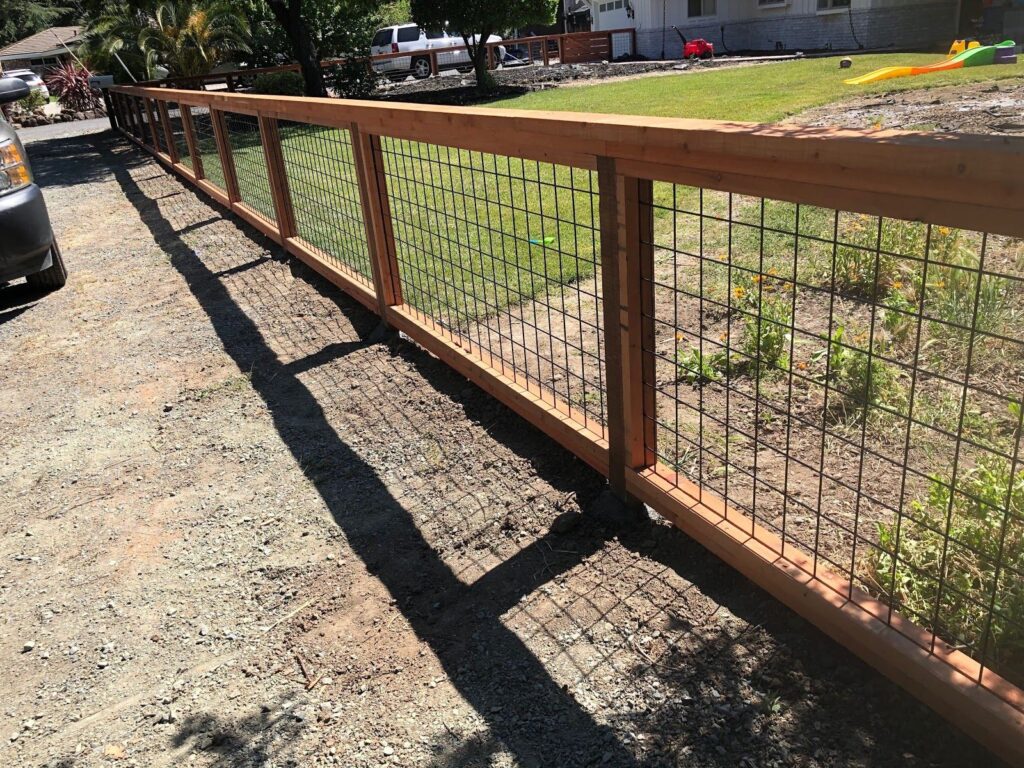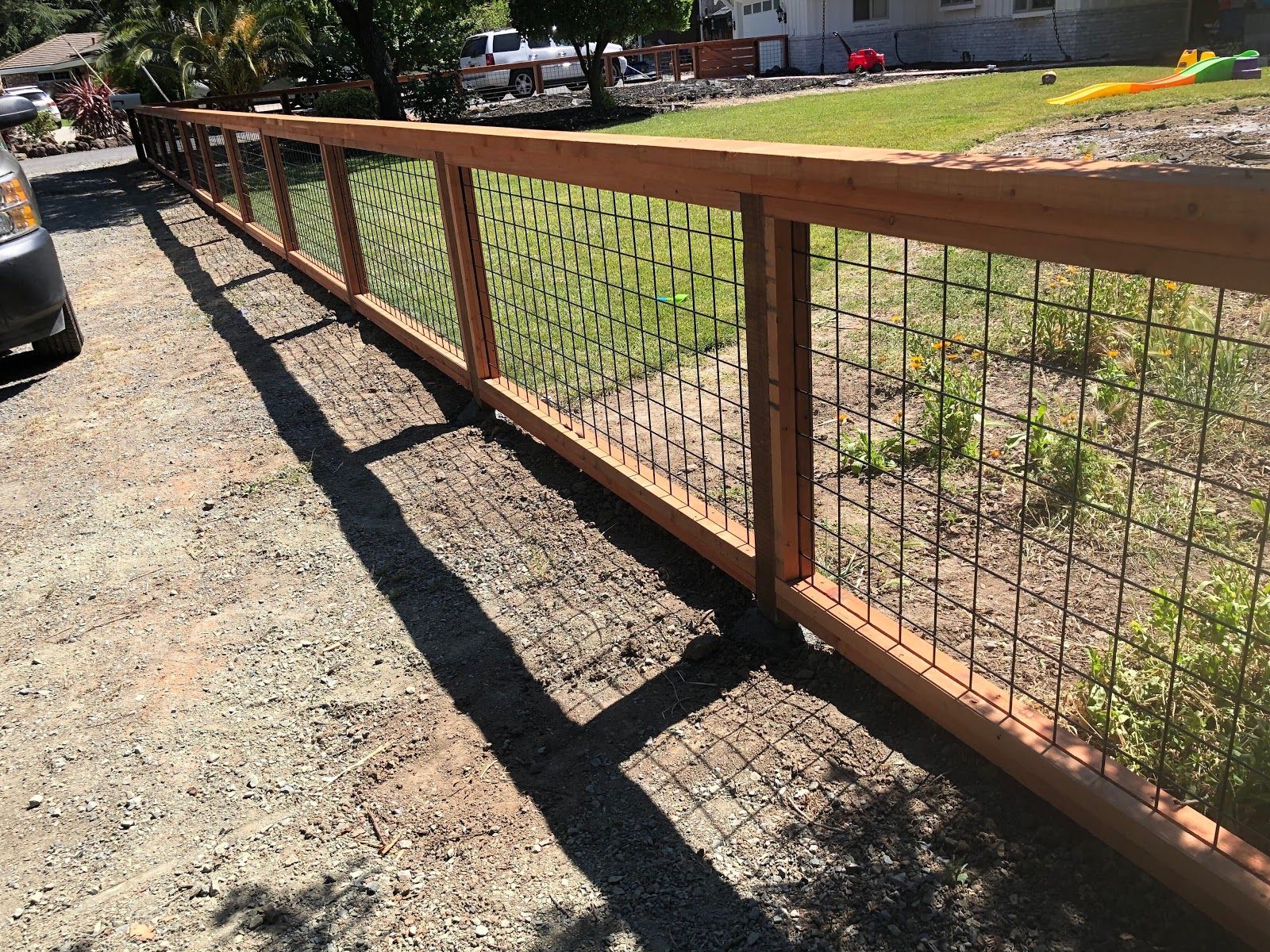
Wood Frame Wire Fence Panels: A Comprehensive Guide to Style, Security, and Installation
Choosing the right fencing for your property is a significant decision, impacting both aesthetics and security. Among the myriad of options available, wood frame wire fence panels stand out for their blend of natural beauty, robust construction, and versatile applications. This guide provides a comprehensive overview of wood frame wire fence panels, covering their benefits, types, installation considerations, and maintenance tips. Whether you’re a homeowner seeking to enhance your curb appeal or a property manager prioritizing security, understanding the nuances of wood frame wire fence panels will empower you to make an informed decision.
The Appeal of Wood Frame Wire Fence Panels
Wood frame wire fence panels offer a unique aesthetic that combines the warmth and natural texture of wood with the practicality and visibility of wire mesh. Unlike solid wood fences that can appear imposing or restrictive, these panels allow for a more open and airy feel while still providing a defined boundary. The wood frame provides structural support and a touch of elegance, while the wire mesh offers security and containment. This combination makes them ideal for a variety of applications, from residential gardens and pet enclosures to commercial properties and agricultural settings.
Benefits of Choosing Wood Frame Wire Fence Panels
- Aesthetics: The natural beauty of wood enhances the visual appeal of any property. Wood frame wire fence panels add a touch of rustic charm and sophistication.
- Security: The wire mesh provides a strong deterrent against unwanted entry, protecting your property and loved ones.
- Durability: When properly treated and maintained, wood frame wire fence panels can withstand the elements and last for many years.
- Versatility: These panels can be used for a wide range of applications, from garden fencing to pet enclosures and property boundaries.
- Cost-Effectiveness: Compared to some other fencing options, wood frame wire fence panels offer a good balance of cost and performance.
- Ease of Installation: With proper planning and preparation, wood frame wire fence panels can be relatively easy to install.
Types of Wood Frame Wire Fence Panels
Wood frame wire fence panels come in a variety of styles, materials, and sizes to suit different needs and preferences. Understanding the different types available will help you choose the best option for your specific project.
Wood Species
The type of wood used for the frame significantly impacts the fence’s durability, appearance, and cost. Common wood species include:
- Pressure-Treated Pine: A popular and affordable option, pressure-treated pine is resistant to rot and insect damage.
- Cedar: Known for its natural resistance to decay and insects, cedar offers a beautiful and long-lasting option.
- Redwood: Similar to cedar, redwood is naturally durable and aesthetically pleasing.
- Cypress: Another naturally decay-resistant wood, cypress is a good choice for wet or humid climates.
Wire Mesh Options
The type of wire mesh used in the panel also affects its strength, visibility, and overall appearance. Common wire mesh options include:
- Welded Wire Mesh: A strong and durable option, welded wire mesh is made by welding wires together at each intersection.
- Woven Wire Mesh: Woven wire mesh is more flexible than welded wire mesh and is often used for livestock fencing.
- Chain-Link Mesh: While less common in wood frame wire fence panels, chain-link mesh can provide a high level of security.
- Hardware Cloth: A fine-mesh wire cloth, hardware cloth is often used for garden fencing and pet enclosures to keep out small animals.
Panel Styles and Designs
Wood frame wire fence panels are available in a variety of styles and designs to complement different architectural styles and landscaping preferences. Some common styles include:
- Square or Rectangular Panels: The most common and versatile style, square or rectangular panels can be used for a variety of applications.
- Arched Panels: Arched panels add a touch of elegance and visual interest to your fence line.
- Scalloped Panels: Scalloped panels feature a curved top edge, creating a decorative and visually appealing fence.
- Custom Designs: Many manufacturers offer custom design options, allowing you to create a unique fence that reflects your personal style.
Installation Considerations for Wood Frame Wire Fence Panels
Proper installation is crucial for ensuring the longevity and performance of your wood frame wire fence panels. Before you begin, it’s important to plan your fence layout, obtain any necessary permits, and gather the required tools and materials. [See also: Fence Installation Basics]
Planning and Preparation
- Determine the Fence Line: Accurately mark the location of your fence line using stakes and string.
- Check for Underground Utilities: Contact your local utility companies to locate any underground lines before digging.
- Obtain Permits: Check with your local authorities to determine if any permits are required for your fence installation.
- Gather Tools and Materials: You’ll need tools such as a post-hole digger, level, measuring tape, saw, and drill, as well as materials such as fence posts, wood frame wire fence panels, concrete, and fasteners.
Installation Steps
- Set the Fence Posts: Dig post holes at the desired intervals and set the fence posts in concrete. Ensure the posts are plumb and properly aligned.
- Attach the Panels: Once the concrete has cured, attach the wood frame wire fence panels to the posts using screws or nails. Make sure the panels are level and securely fastened.
- Add Finishing Touches: Once the panels are installed, add any finishing touches, such as post caps or decorative trim.
Maintaining Your Wood Frame Wire Fence Panels
Regular maintenance is essential for extending the life of your wood frame wire fence panels and keeping them looking their best. [See also: Fence Maintenance Tips]
Cleaning and Inspection
- Clean the Fence Regularly: Remove dirt, debris, and mildew from the wood frame and wire mesh using a brush and mild detergent.
- Inspect for Damage: Regularly inspect the fence for signs of damage, such as cracks, rot, or loose fasteners.
Repair and Treatment
- Repair Damaged Areas: Repair any damaged areas promptly to prevent further deterioration.
- Apply Wood Preservative: Apply a wood preservative or sealant to the wood frame every few years to protect it from moisture and insect damage.
- Treat Rust on Wire Mesh: If the wire mesh shows signs of rust, treat it with a rust inhibitor and apply a protective coating.
Cost Considerations for Wood Frame Wire Fence Panels
The cost of wood frame wire fence panels can vary depending on factors such as the type of wood, the gauge of the wire, and the size of the panels. Installation costs will also vary depending on whether you hire a professional contractor or install the fence yourself. Consider getting multiple quotes to ensure you get the best price for your project. [See also: Fence Cost Estimator]
Conclusion
Wood frame wire fence panels offer a compelling combination of style, security, and versatility, making them a popular choice for homeowners and property managers alike. By understanding the different types of panels available, considering installation requirements, and implementing a regular maintenance plan, you can ensure that your wood frame wire fence panels provide years of beauty and protection. From enhancing curb appeal to providing a safe enclosure for pets or livestock, these panels offer a practical and aesthetically pleasing fencing solution. Investing in wood frame wire fence panels is an investment in the long-term value and security of your property. The blend of natural wood and durable wire makes them a superior choice for many fencing needs. Remember to carefully consider your specific needs and budget when selecting the right wood frame wire fence panels for your project. With proper planning and execution, you can create a beautiful and functional fence that will enhance your property for years to come. Choosing the right wood frame wire fence panels also means considering the environmental impact of your choice. Look for sustainably sourced wood and eco-friendly treatment options to minimize your footprint. In conclusion, wood frame wire fence panels represent a smart and stylish way to define your property boundaries, offering both security and aesthetic appeal.

